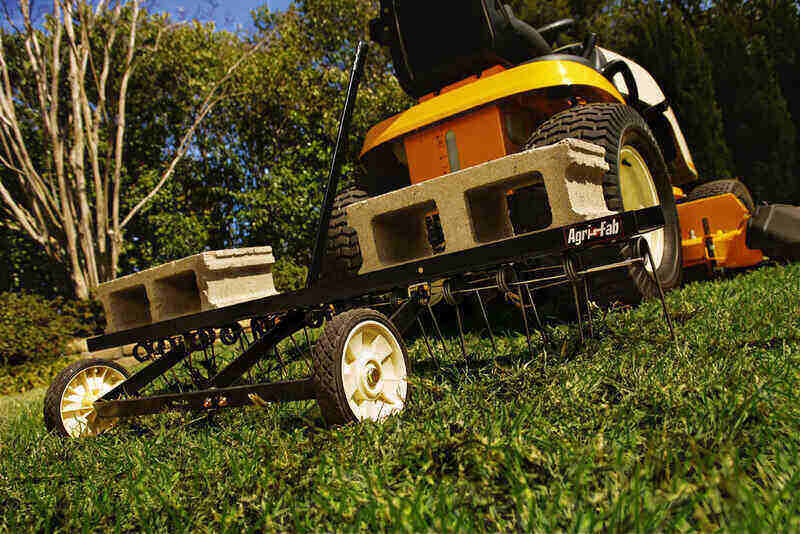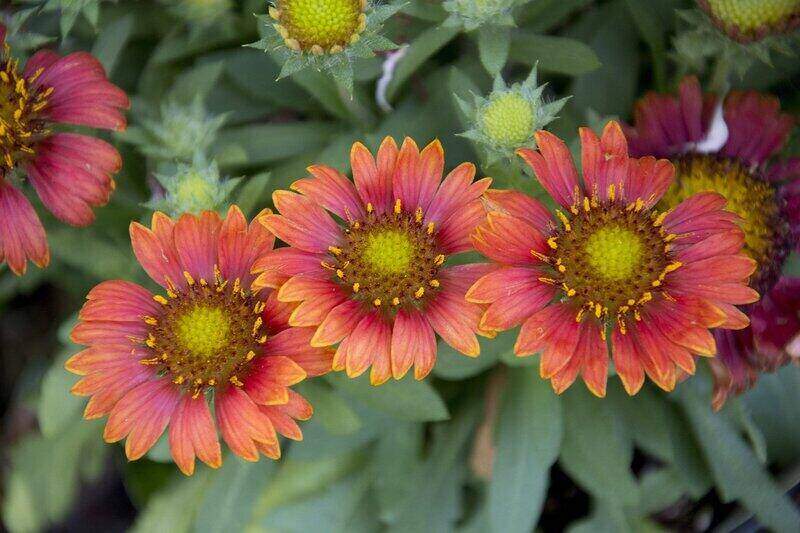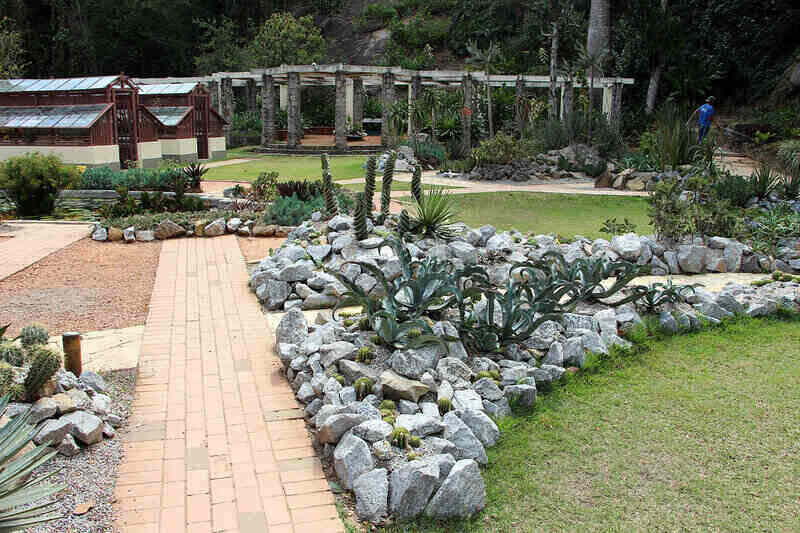6 Fire-Resistant Landscaping Ideas for Montana
BY KIMBERLY MAGERL | MAY 25TH, 2023 | LAWN CARE, MONTANAMontana is nicknamed “The Last Best Place” for its natural, rugged terrain. It is home to some of the last uninhabited areas in North America, and every year, residents expand further into its remote regions, increasing populations across the wild landscapes and the chances of wildfires. Wildfire activity continues to increase thanks to Montana’s semi-arid climate. All residents, especially those living in Wildland-Urban Interface (WUI) areas in remote locations near undeveloped forests or grasslands, should implement these fire-resistant landscaping ideas to protect their homes, families, and landscapes.
In this article, we’ll cover:
Benefits of Fire-Resistant Montana Landscaping
6 Fire-Resistant Landscaping Ideas for Montana
- Maintain Your Landscape
- Landscape With Fire-Resistant Plants
- Use Fire-Resistant Building Materials
- Create Survivable Space
- Add Hardscaping
- Adopt Fire-Smart Habits
FAQ About Fire-Resistant Landscaping in Montana
Benefits of Fire-Resistant Montana Landscaping
Fire-resistant landscaping offers many benefits to Montanans, including:
- Improved structural survivability: increases the likelihood your home and outbuildings remain intact without fire suppression
- Improved defensibility: increases the likelihood that firefighters can defend your property and stop the spread of a wildfire
- Minimized fuel sources: reduces ignition sites
Wildfires are part of Montana’s past, present, and future. There is no such thing as a completely fireproof landscape. However, you can take steps to protect your home and yard through fire-smart landscaping practices.
6 Fire-Resistant Landscaping Ideas for Montana
1. Maintain Your Landscape

Photo Credit: Agri-Fab / Wikimedia Commons / CC0
May is Wildfire Awareness Month in Montana. The primary goal of firewise landscaping is to keep a wildfire low, minimizing its intensity. Wildfire risk reduction is an ongoing process requiring regular attention to landscape maintenance.
Montana wildfire preparedness lawn maintenance activities include:
- Trim the lower branches of trees and shrubs to heights of 6-10 feet
- Remove dead vegetation to minimize ignition sources
- Mow and dethatch regularly
- Dispose of grass clippings and organic debris, paying special attention to gutters, roofing, and decking areas
2. Landscape With Fire-Resistant Plants

Photo Credit: Pixabay
Montana’s mountainous western regions, with their continental climates, receive over 35 inches of annual rainfall. Unfortunately, the steppe climates in the central and eastern regions of the Treasure State only receive around 15 inches of rain or less, far below the national average rainfall of 30 inches, creating a fire-prone habitat.
It is important to note that no plant is fireproof, and any plant will burn under the right conditions. However, some plants resist ignition and are better suited to withstanding extreme heat. Fire behavior, climate, moisture content, plant size, and flammable or inflammable compounds inside bark or leaves all affect a landscape’s ability to resist ignition.
Check out some of the best fire-resistant plants for the Treasure State:
Herbaceous Perennials
- Beardtongue (Penstemon)
- Blanketflower (Gaillardia aristata)
- Columbine (Aquilegia spp.)
- Rock Cotoneaster (Cotoneaster horizontalis)
- Yarrow (Achillea millefolium)
- Yucca (Yucca filamentosa)
Low-Growing Groundcover
- Creeping Juniper (Juniperus horizontalis)
- Creeping Oregon Grape (Berberis repens)
- Little Green Sedge (Carex viridula)
- Mountain Avens (Dryas hookeriana)
- Rosy Pussytoes (Antennaria rosea)
Montana Turfgrass
- Creeping Red Fescue (Festuca rubra)
- Crested Wheatgrass (Agropyron cristatum)
- Kentucky Bluegrass (Poa pratensis)
- Tall Fescue (Festuca arundinacea)
Trees and Shrubs
- Chokecherry (Prunus virginiana)
- Redosier Dogwood (Cornus sericea)
- Rocky Mountain Maple (Acer glabrum)
- Skunkbush Sumac (Rhus trilobata)
- Spring Birch (Betula occidentalis)
Succulents
- Brittle Prickly Pear (Opuntia fragilis)
- Missouri Foxtail (Coryphantha missouriensis)
- Plains Prickly Pear (Opuntia polyacantha)
- Simpson’s Hedgehog (Pediocactus simpsonii)
- Spinystar Cactus (Coryphantha vivipara)
What to Look for in Fire-Resistant Landscape Plants
Not all landscape plants are created equal. In fact, most succulents, salt-tolerant plants, and deciduous trees and shrubs are naturally fire-resistant. Watch for the following characteristics when choosing non-native and native Montana plants:
- Thick, flexible leaves with high water content
- Low or no-odor watery sap
- Low sap or resin content
- Open growth structures with space between branches
- Thick, close-growing bark that doesn’t peel away from the trunk
Conversely, avoid the following characteristics when choosing landscape plants:
- Species like conifers that accumulate dry, fine, or dead plant materials such as needles, leaves, twigs, or cones
- Tight growth structures
- Leaves and branches containing wax, oil, or terpenes
- Aromatic foliage
- Thick, gummy, resinous sap with a strong odor
- Loose, flaky, or papery bark
3. Use Fire-Resistant Building Materials
Firewise construction comes together with your firescaping to create a complete, fire-resistant landscape. FIrewise structures must reduce fuel sources and exposure. Like plants, not all materials are created equal and many construction materials are combustible.
Look for the following characteristics:
- Class A, fire-resistant roofing materials: asphalt or composite shingles, slate, clay, metal, cement, or concrete
- Fire-resistant subroofing materials such as non-combustible underlayment
- Fire-resistant outer materials: stucco, brick, plaster, stone, or concrete; avoid vinyl
- Window size and materials: smaller windows withstand extreme heat; look for double pane or tempered glass
- Avoid plastic skylights that melt
- Cover exterior and under-floor vents with wire mesh to prevent sparks
- Attach a masonry or metal barrier between a wooden deck and your home
- Construct landscape trellises from metal instead of wood
4. Create Survivable Space
Defensible space, now known as survivable space, involves modifying landscape design, building materials, and inorganic and organic fuel sources to decrease the likelihood of home ignition caused by wildfire. Fire experts encourage all Montana homeowners to firescape and maintain their survivable space, 100 to 200 feet in all directions. This area is known as the Home Ignition Zone (HIZ).
Your home is more likely to survive a wildfire without fire suppression and intervention if grasses, plants, trees, and man-made structures are spaced regularly to reduce a fire’s intensity.
Montana recognizes three home zones:
| Zone | Distance from Structure | Things to Avoid | Recommendations |
| Zone 1 | 0-30 feet | • Woody, aromatic, or resinous plants • Closely spaced plants • Organic mulch • Woodpiles • Wooden decks, pergolas, or trellises | • Fire-resistant plants, shrubs, and trees • Short, green, well-maintained turfgrass • 100-foot garden hose attached to home • Gravel, flagstone, and non-flammable composite decking and hardscapes • Accessible driveway with visible address |
| Zone 2 | 30-100 feet | • Vegetation near wood piles, fuel tanks, or outbuildings • Dense, closely-spaced vegetation • Organic debris piles | • Location for storage shed or outbuilding • Recycle or compost instead of burning • Thin and prune coniferous trees • Store woodpiles and propane tanks |
| Zone 3 | 100-200+ feet | • Dense thickets of shrubs or trees • Overgrowth | • Prune and thin trees • Regularly monitor re-sprouting |
5. Add Hardscaping

Photo Credit: Sailko / Wikimedia Commons / CC BY 3.0
Native plants are adapted to the harsh and dry conditions of Big Sky Country. The unpredictable weather can make outdoor lawn maintenance a burden, while the semi-arid climate makes growing a dense, green yard difficult. Consider hardscaping your backyard to add sustainable visual interest while eliminating the need for weekly maintenance and watering and reducing your landscape’s fire risk.
Hardscapes are man-made features, including:
- Decks
- Patios
- Pergolas
- Garden paths
- Decorative stones
- Rock gardens
- Water features
- Grill surrounds
Hardscapes are a set-it-and-forget-it choice for your landscape. They don’t require watering, pruning, or mowing. In fact, they don’t require maintenance at all except for an annual cleaning. Be sure to consider materials and location when choosing and installing your hardscapes. Keep wooden structures away from vegetation inside Zone 2 of your home’s survivable space. Stone hardscapes and garden paths make great additions to Zone 1.
Advantages of hardscapes:
- Only require annual cleaning
- Increase property value and curb appeal
- Define spaces and increase functionality: entertaining, cooking, outdoor living
- Conserve water
- Reduce weeds and pests
- Create shade
- Reduce soil erosion
6. Adopt Fire-Smart Habits
According to the National Park Service, humans cause almost 85% of all wildfires in the the U.S. Creating defensible space, maintaining your landscape, and planting fire-resistant species are small steps you can take to help increase the survivability of your property while using common sense and adopting fire-smart habits to decrease Montana’s chances of wildfires.
Fire-smart habits include:
- Keep gutters, eaves, and roofs clear of leaves and organic debris
- Position wood piles 30 feet from vegetation and structures
- Block dead leaves and organic debris from accumulating under decks and raised structures with wire mesh
- Line outdoor vent openings with wire mesh
- Perform annual chimney maintenance and install a screen
- Ensure vehicle trailer chains are secure and not dragging on pavement
- Never burn organic debris piles on low-moisture, windy days
- Never assume a fire is out until you can safely touch it with your hand
- Always mow before 10 a.m. during hot weather
FAQ About Fire-Resistant Montana Landscaping
Yes. Your roof comprises two-thirds of your home’s outer structure, and it is its most vulnerable component. It can easily catch fire from floating embers. Select a Class A roofing material for the best fire resistance and limit the length of eaves and overhangs.
Montana’s fire season runs from May through October, but wildfires can occur at any time under the right conditions.
In Montana, human negligence from debris burning, campfires, or landscaping and farm equipment cause 75% of all wildfires.
How a Pro Can Protect Your Property
Fire-prone regions like Big Sky Country are arid, and drought-resistant landscaping performs best under these conditions. Switching to drought-resistant landscaping means less time, effort, water, weeding, mowing, and pests. In steppe climates like Montana where average rainfall is less than 15 inches per year, water conservation is important. Consider integrating our drought-resistant landscaping tips into your fire-resistant landscape.
Fire-resistant landscaping is only a small part of your fire preparedness plan. From designing evacuation routes to creating emergency supply kits and securing furry family members, there is a lot to consider.
Give yourself peace of mind and check one thing off your to-do list. Let Wikilawn connect you with a local landscaping company that can handle your fire-resistant landscape design.
Main Photo by: Jeremy Levine / Flickr / CC BY 2.0